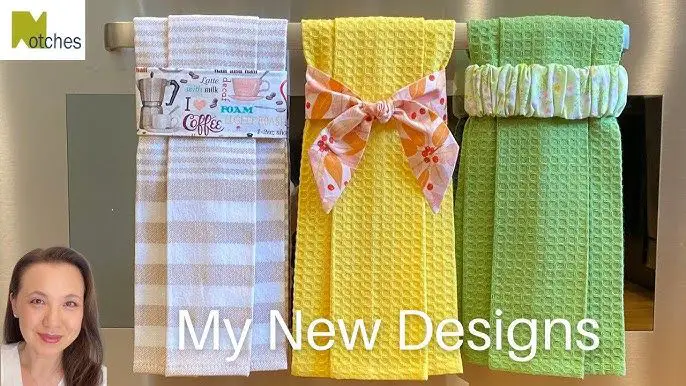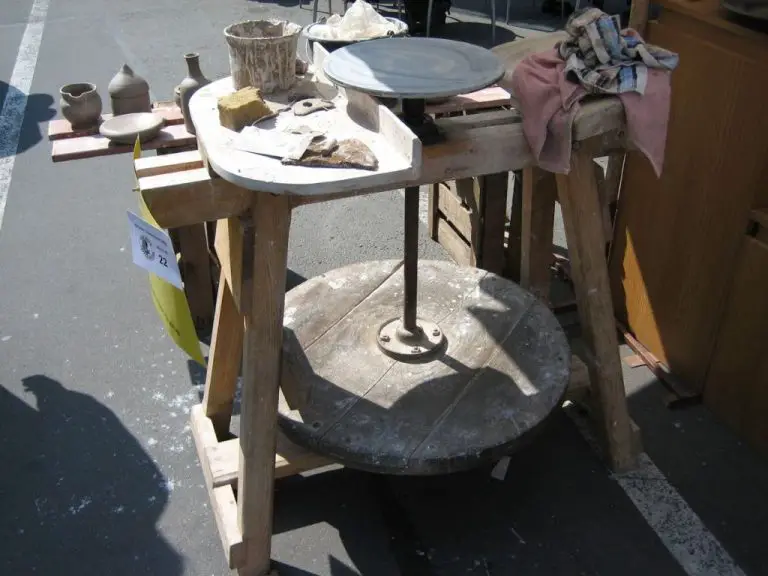What Is The Difference Between A Dish Towel And A Kitchen Towel?
Dish towels and kitchen towels are two common household linens that are often used interchangeably. However, there are some key differences between the two that set them apart in terms of intended use, materials, care and maintenance.
The purpose of this article is to provide a comprehensive overview comparing and contrasting dish towels versus kitchen towels. We will define what constitutes each type of towel, examine how they differ in size, fabric, design and intended functionality. We’ll also look at care and cleaning methods, environmental impact, popular brands and costs. By the end, readers will have a clear understanding of how to distinguish between dish towels and kitchen towels and when it’s appropriate to use each.
Materials
Dish towels and kitchen towels can be made from a variety of materials, with the most common being cotton, microfiber, and linen. The material affects factors like absorbency, durability, drying time, and cost.
Cotton is a popular choice as it is highly absorbent, soft, inexpensive, and gets softer over time. However, cotton is slower to dry. Terry cloth cotton is very absorbent with its looped pile, while flat-weave cotton is smoother and dries faster.https://cottoncreations.com/2021/10/20/types-of-kitchen-towels/
Microfiber is synthetic, very absorbent, dries quickly, and is durable and lint-free. However, it can start to smell over time. Microfiber also doesn’t absorb grease as well as cotton.https://www.apartmenttherapy.com/kitchen-dish-towels-types-guide-36885516
Linen is lightweight, absorbent, dries quickly, and is long-lasting. However it wrinkles easily and can be more expensive. Linen works well for hand drying and wiping down counters.
Sizes
Dish towels are typically smaller than kitchen towels. The standard size for a dish towel is 15″ x 20″, while kitchen towels tend to be around 18″ x 26″ or 20″ x 30″ (Handwoven). Dish towels are designed to be convenient for drying dishes, glasses, and utensils, so a smaller size works well. Kitchen towels can be a bit larger since they are used for drying hands, wiping counters, handling hot dishes, and other general tasks around the kitchen.
Some manufacturers make oversized kitchen towels up to 25” x 35” for extra absorbency and versatility (Cotton Creations). Tea towels tend to be around 12″ x 17″ up to 13” x 18”, a size that works well for blotting tea cups and absorbing condensation (Apple Lee Farm). In summary, dish towels run smaller, kitchen towels are medium to large, and tea towels are small to medium.
Patterns and Designs
Dish towels tend to have more decorative, intricate patterns and designs compared to kitchen towels. Dish towels often feature colorful prints, motifs, and artwork, like floral patterns, geometric shapes, holiday themes, and more. Brands like Cotton Creations offer dish towels with beautiful designs meant to brighten up your kitchen decor.

In contrast, kitchen towels usually have simpler, more subtle patterns and designs. They tend to use basic stripes, checks, or solids rather than complex artwork. This plainer styling helps kitchen towels blend seamlessly into the background of a busy kitchen. Brands like IKEA sell minimalist kitchen towels that match well with a variety of kitchen decors.
The decorative patterns on dish towels make them better suited for display, while the simple designs on kitchen towels optimize them for heavy-duty use. Dish towels add a pop of color and visual interest, while kitchen towels focus more on functionality.
Intended Uses
Dish towels and kitchen towels serve slightly different purposes in the kitchen. Here are the main uses for each:
Dish towels are intended for drying dishes, glassware, cutlery, and other dishware after washing. Their absorbent terry cloth material makes them ideal for soaking up water and drying dishes quickly. Dish towels are also handy for drying hands while doing dishes or wiping down counters and surfaces like stovetops. However, they should not be used for wiping spills on floors or cleaning dirty surfaces.
Kitchen towels are multi-use towels for tasks like drying hands, wiping down appliances, cleaning up spills, covering rising dough, handling hot pots and pans, and more. They are made from thin, lint-free cotton which allows them to absorb liquids and dry quickly between uses. Kitchen towels can be used for quick cleanups and drying but are not as absorbent as thicker dish towels designed specifically for drying dishes and cutlery after washing.
Cleaning and Care
There are some key differences in how to properly wash, dry, and care for dish towels vs kitchen towels.
Dish towels, which are usually made of cotton or microfiber, can typically withstand very hot water temperatures and harsh detergents in the wash. According to Proper Care of Dish Cloths and Kitchen Towels, you should wash dish towels on the hot water setting and heavy duty cycle. The high heat helps sanitize and remove grease and bacteria.
Kitchen towels may require more delicate care, as some are made from materials like linen that don’t hold up to hot water or bleach. According to How Often You Should Wash Your Dish Towels, you’ll need to check the care instructions for your specific kitchen towels. In general, wash them regularly in warm or hot water on a normal cycle, and avoid using bleach unless the fabric permits it.
Both dish and kitchen towels should be laundered very frequently – ideally after every couple uses – since they harbor bacteria. Allowing them to fully dry between uses is also key. Kitchen towels in particular take longer to dry, so may require machine drying or hanging outside.
Cost
Dish towels and kitchen towels can range significantly in price. Here are some typical costs:
Dish towels often cost $1-3 each when purchased in multi-packs from stores like Target or Walmart. Higher quality, name brand dish towels like Zeppoli typically cost $15-20 for a set of 5-15 towels.
Kitchen towels are generally more expensive than dish towels. Basic cotton kitchen towels can cost $5-10 each. Higher end kitchen towels from brands like LinenMe and Joe’s Towels range from $17-20 per towel.
Factors affecting cost include materials, brand name, quality, intended use, size, and quantity purchased. For example, a set of 6 basic cotton dish towels may cost $10 total, while a single premium linen kitchen towel could cost $20.
Environmental Impact
When comparing the environmental impact of dish towels versus paper towels, there are tradeoffs to consider. On one hand, paper towels are disposable and contribute to landfill waste. According to the Family Handyman, paper towels fall into the paper and paperboard category of waste, which accounts for over 25% of landfill material in the United States. The manufacturing and disposal of paper towels also consumes trees, water, and energy.
On the other hand, reusable dish towels require washing, which consumes water and energy. However, studies have found the carbon emissions associated with using a dish towel can be as low as 1.14 grams CO2e per use, compared to 5.53 grams for a single paper towel. Washing dish towels in cold water and line drying them can further reduce their environmental impact. Ultimately, reusable dish towels generate less waste over their lifespan compared to continually disposing of paper towels after each use.
Consumers should consider their habits and usage to determine whether dish towels or paper towels are the more eco-friendly option for their household. Using dish towels for some tasks and paper towels for messes that should be disposed of, like raw meat spills, can balance convenience and sustainability.
Popular Brands
Some of the most popular brands for dish towels include Zeppoli, Utopia Towels, and Food52. Zeppoli is known for its classic and affordable dish towels made from 100% cotton. Utopia Towels offers budget-friendly options often recommended as the best value. Food52 produces more high-end and luxurious dish towels.
For kitchen towels, some of the top brands are Williams Sonoma, Utopia Towels, and All-Clad. Williams Sonoma provides high quality cotton kitchen towels that are very absorbent. Utopia Towels is a top choice for budget-friendly kitchen towels made from organic cotton. All-Clad makes premium reversible kitchen towels that are durable and quick-drying.
Conclusion
In summary, the key differences between a dish towel and a kitchen towel are in their materials, sizes, patterns and designs, intended uses, cleaning requirements, costs, and environmental impacts.
Dish towels are usually made of cotton or a cotton blend, while kitchen towels can be made from linen, cotton, microfiber, and other materials. Dish towels tend to be smaller, around 15-20 inches square, while kitchen towels come in a wider range of sizes. Dish towels often have decorative patterns and designs, whereas kitchen towels tend to have a more basic, solid look.
Dish towels are meant for drying dishes, glassware, and silverware. Kitchen towels have a broader range of uses, like drying hands, wiping counters, handling hot dishes, and more. Dish towels can usually be laundered with regular loads of laundry, while kitchen towels may require special care like bleaching or sanitizing washes.
Dish towels are typically inexpensive, while some kitchen towels can be pricier designer brands. Both contribute waste and environmental impact when disposed of or washed frequently. Overall, while dish towels and kitchen towels overlap in functionality, they have some distinct differences in their materials, designs, uses, care, costs, and environmental footprints.



